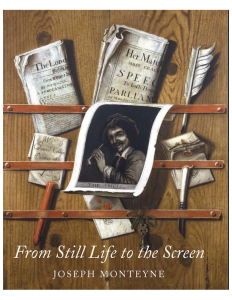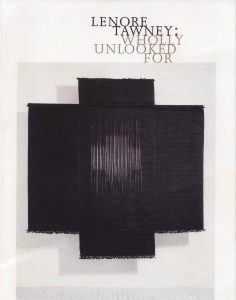Germaine Koh: Weather Systems

Germaine Koh is a Vancouver-based artist whose work relates natural and human systems by focusing on the inter-relatedness of conditions in the built and natural environment. Koh’s work often links the space of the gallery with the outside environment or actively intervenes in the institution to reveal tensions between the public and private realms. Through her interventions into technology and everyday systems, Koh creates alternate networks of transmission and exchange.
This full colour publication was produced in conjunction with the solo exhibition Germaine Koh: Weather Systems at the Kamloops Art Gallery April 6 to June 15, 2013 and includes reproductions of the artist’s works spanning two decades.
Essays by Sarah Cook, Mark Miessen and Yulia Startsev. Foreword by Jann L M Bailey.
For more information: https://kag.bc.ca/pub/germaine-koh
From Still Life to the Screen

From Still Life to the Screen explores the print culture of 18th-century London, focusing on the correspondences between images and consumer objects. In his lively and insightful text, Joseph Monteyne considers such themes as the display of objects in still lifes and markets, the connoisseur’s fetishistic gaze, and the fusion of body and ornament in satires of fashion. The desire for goods emerged in tandem with modern notions of identity, in which things were seen to mirror and symbolize the self. Prints, particularly graphic satires by such artists as Matthew and Mary Darly, James Gillray, William Hogarth, Thomas Rowlandson, and Paul Sandby, were actively involved in this shift. Many of these images play with the boundaries between the animate and the inanimate, self and thing. They also reveal the recurring motif of image display, whether on screens, by magic lanterns, or in “raree-shows” and print-shop windows. The author links this motif to new conceptions of the self, specifically through the penetration of spectacle into everyday experience.
For more information: https://yalebooks.yale.edu/book/9780300196351/still-life-screen
Lenore Tawney: Wholly Unlooked For

Essay contribution by T’ai Smith in Lenore Tawney: Wholly Unlooked For, edited by Kathleen Nugent Mangan. Philadelphia : University of Arts ; Baltimore : Maryland Institute College of Art, 2013
Book information:
Catalog of a collaborative exhibition held at The Maryland Institute College of Art in Baltimore, December 7, 2012 through March 17, 2013, and The University of the Arts in Philadelphia, January 17 through March 2, 2013.
A major figure in the fiber movement of the 1950s and 1960s, Lenore Tawney redefined the possibilities of weaving and led the way toward the explosive growth of fiber art in subsequent decades. She created a new vocabulary for textile works by subverting the typical woven grid and inventing new ways of weaving beyond the traditional boundaries of the loom. In order to emphasize the sculptural qualities of her works, Tawney maintained that they hang in space rather than against the wall.
- ” … the first solo exhibition of Tawney’s work since her death in 2007, the first public display of several works and objects, and the first collaborative exhibition organized by these two art and design colleges.”–Page 3.
Native Art of the Northwest Coast: A History of Changing Ideas

Charlotte Townsend-Gault, Jennifer Kramer, and Ḳi-ḳe-in, eds. Native Art of the Northwest Coast: A History of Changing Ideas. Vancouver, BC: UBC Press, 2013
Book information:
The Northwest Coast of North America has long been recognized as one of the world’s canonical art zones. Since the mid-1700s, objects or “art” deriving from the Indigenous cultures of this area have been desired, displayed, and exchanged, classified and interpreted, stolen and confiscated, bought and sold, and displayed again in many parts of the world. “Northwest Coast Native art” has proved to be a powerful idea, assuming many guises over the centuries. But how has it been defined, and by whom and why?
This remarkable volume, many years in the making, records and scrutinizes definitions of Northwest Coast Native art and its boundaries. A work of critical historiography, it makes accessible for the first time in one place a broad selection of more than 250 years of writing on Northwest Coast “art.” Organized thematically, its excerpted texts are from both published and unpublished sources, some not previously available in English. They cover such complex topics as the clash between oral and written knowledge, transcultural entanglement, the influence of surrealist thinking, and the long history of the deployment of Northwest Coast Native art for nationalist purposes. The selections are preceded by thought-provoking introductions that give historical context to the diverse intellectual traditions that have influenced, stimulated, and opposed each other.
The central importance of this book is that it counters the tendency to turn Northwest Coast Native “art” into a one-dimensional spectacle that obscures and reduces the values of its component cultures and ignores the wider histories of thought that have contributed to its production. In unsettling the conventions that have shaped “the idea of Northwest Coast Native art,” this book takes a central place in the lively, often heated, and now global, debates about what constitutes Native art and who should decide.
A significant resource for scholars and students in a variety of disciplines that will also resonate with a wide international readership.
For more information: https://www.ubcpress.ca/native-art-of-the-northwest-coast